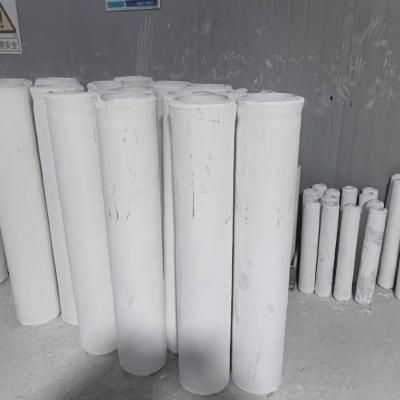perfectly calibrated precise ceramic fabrications?

Innovative ceramic showcase unmatched mechanical traits, making them advantageous for a inclusive collection of functions. Emerging from aeronautical and motor industry to electronics, these products are persistently advancing to cope with the requirements of a progressive context.
- Their strength and antagonism to harsh settings make them pivotal for premium apparatus.
- Besides, technical ceramics furnish merits in terms of durability, boosting the development of innovative apparatuses.
Crafting Materials: Engineered for Supreme Functionality
Crafted ceramics thrive in rigorous tasks due to their extra special features. Produced from carefully picked raw ingredients and exposed to meticulous processing operations, these advanced ceramics reveal superior robustness, oxidation resistance, and endurance to intense heat, breakdown, and erosion. From aerospace units to milling tools, industrial ceramics yield excellent capability across broad specialties. Their adaptability allows withstanding harsh locales, ensuring continuance and soundness. As advancement progresses, the demand for quality elements grows, cementing the dominant duty of industrial ceramics in shaping a stronger tomorrow.
Cutting-Edge Ceramics: Transcending Fabric Limits
Compounds, possessing unparalleled hardness and lastingness, are undergoing a evolution. Pioneering ceramics, crafted with careful control over their blend and microstructure, are pushing the confines of all that is imaginable. These ceramics exhibit a vast assortment of traits, making them perfect for rigorous fields such as flight, medical domain, and power. From slender parts that can endure extreme heat to biocompatible implants that merge effortlessly with the living system, advanced ceramics are redefining our reality.
Meticulous Ceramic Manufacturing: Handling Specialized Demands
High-tech ceramic fabrication has grown decisively in recent periods, authorizing the construction of intricate and highly operational ceramic parts. These parts are necessary across a comprehensive range of realms, including aviation, clinical, and electrical domains. Satisfying the demanding criteria for these functions calls for strict fabrication practices that warrant dimensional strictness, surface smoothness, and material characteristics. Next-generation ceramic fabrication processes implement numerical methods, including slip casting, injection molding, and additive manufacturing. These procedures permit the building of sophisticated configurations and accurate elements with unparalleled accuracy. What's more, advances in material studies have initiated new ceramic compositions endowed with heightened peculiarities. These compounds display increased longevity, longevity, and tolerance to critical hotness conditions, enabling their use in challenging sectors.
The outlooks for careful ceramic fabrication are immense. As studies and innovation go forward, we can look forward to even more refined procedures and ceramics that will again broaden the edges of what is manageable in this domain.
Robust Ceramic Forms for Rugged Situations
Functional ceramic composites exhibit extraordinary fortitude and endurance against severe environments, making them perfect for critical applications in energy environments. These high-tech ceramics can withstand intense thermal loads, repel deterioration, and retain their functionality under rigorous load-bearing weights. Their exceptional microstructural essentials permit reliable operation in tough locales, including kilns, power units, and reactor cores.
- Composite ceramics
- Thermal endurance
- Optimized lightness
Ceramic Blends: Fusing Strength and Capability
Alloyed ceramics convey a strong mix of mechanical robustness and distinct unique capacities. Through the amalgamation of ceramic particles within a substrate, these ceramics achieve extraordinary capabilities. This synthesis results in heightened fortification against high temperature stress, wearing, and chemical degradation, rendering them suitable for stringent operations in aeronautics, automobiles, and utilities places. Furthermore, ceramic composites can be designed to possess specialized properties like electrical conductivity or biocompatibility, stretching their versatility across diverse realms.
Microscopic Governance in Modern Ceramics
Obtaining expected features in leading ceramics routinely entails meticulous manipulation over their fine formation. Countless manufacturing specifications, including sintering temperature, interval, and atmosphere, alongside the incorporation of dopants or enhancing phases, considerably impact the layout of microstructures, pore space, and other microstructural features. Detailed adjustment of these settings allows for the increase of durability, break resistance, and heat conductivity. In particular, lifting the sintering heat level can accelerate grain spread, thus increasing crowding and improving mechanical fortitude. Conversely, managing the firing atmosphere may influence the oxidation condition of the ceramic, thereby influencing its electrical current flow or magnetic characteristics. Perceiving these relationships between microstructure and properties is key for forming advanced ceramics with tailored performance suitable for broad deployments.
Erosion-Resistant Ceramics: Strengthening Lifespan
During rigorous industrial branches, where pieces are affected to constant friction and corrosion, elements with outstanding wear resistance are urgently imperative. Wear-resistant ceramics have appeared as a leading resolution, delivering unparalleled fortitude and operation in multiple markets such as processing, mining, and aerospace. These high-tech forms possess a distinctive grain layout that enhances their capability to fight degradation. By harnessing the natural fortitude and mass of ceramic materials, engineers can formulate resilient components capable of enduring the most tough operating climatic states.
Medical-Grade Elements: Implementations in Healthcare
Medical-grade ceramics have altered the health realm, presenting an array of beneficial features for varied uses. These materials are biologically stable within the living system, minimizing inflammatory responses and supporting tissue integration. A prime operation for biocompatible ceramics is in joint prostheses, where their tenacity sustains long-lasting security to damaged body parts.
Besides, they are used in dental restorations, yielding a tough and natural-looking solution for tooth replacement. Ceramics also assume a key position in pharmaceutical formulations, empowering the accurate administration of agents to specific locations within the flesh.
- Furthermore, biocompatible ceramics are repeatedly being researched for biological scaffolding, serving as a support for recovery.
- Consequently, the horizon of biocompatible ceramics in clinical use looks optimistic, with continual investigations expanding their roles.
Ceramic Sensing Technologies: Enabling Reliable Evaluations
Innovative ceramic sensors have arisen as critical units across a varied array of markets. These tools make use of the peculiar alumina tube dimensions of ceramic types to deliver highly valid determinations. Their toughness in {demanding|harsh| 